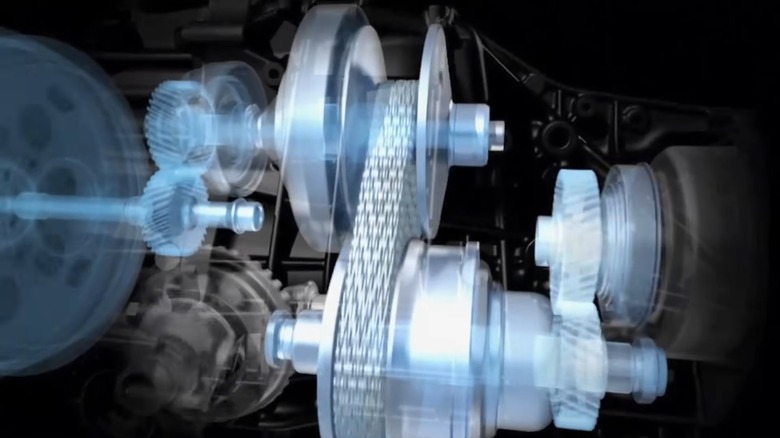When Did Subaru Start Using CVT Transmissions (And Do All Its Vehicles Have One?)
CVT stands for continuously variable transmission and was first built in the late 19th century. An inventor, Milton Reeves, constructed the first CVT, and it wasn't initially used in an automobile, but instead was implemented into sawmill machinery. Reeves would go on to craft one of the first cars in America, which did utilize his CVT transmission design.
A CVT operates much differently than how an automatic transmission works because it essentially has a never-ending number of variations as opposed to a set number of fixed gears. This enhanced variety of gear ratios is accomplished using two tapered pulleys connected by a steel belt. The space between the pulleys is increased or decreased, allowing for differences in the rotational speed achieved.
Subaru's Lineartronic CVT has been included on every automatic model since 2014, with the exception of the automakers BRZ sports car. The Lineartronic CVT from Subaru offers some advantages, such as a smoother ride, greater efficiency, and reduced weight. However, there is a very good reason Subaru doesn't include the Lineartronic CVT on its high-performance BRZ.
CVTs offer enhanced efficiency and smooth acceleration
Subaru's CVT provides plenty of advantages for the average driver. A CVT is able to get better fuel economy because it can pinpoint the best spot within the power band and stay there. It also helps that a CVT weighs much less, since it doesn't need all of the heavy gears that are included in an automatic transmission.
While most modern transmissions can shift between gears without creating a jarring transition, a CVT excels at providing an even smoother experience. Subaru's Lineartronic CVT can apply power throughout acceleration, not experiencing the typical interruptions to output like an automatic switching gear. You'll particularly notice how seamless your vehicle accelerates driving uphill, where a CVT can quickly reach the ideal ratio without hesitation. An automatic transmission in a similar scenario would cause you to feel hard shifting while it was working to find the appropriate gear going up an incline.
CVTs can't handle high torque and have a shorter service life
Unfortunately, when it comes to this unique transmission, it isn't all good news, with the CVT even getting a bad rap in some circles. In terms of performance, a CVT isn't able to handle lots of power, which is likely why it's not available in Subaru's sporty BRZ. The 2025 BRZ comes equipped with a 2.4-liter Subaru Boxer engine generating 228 horsepower and 184-pound feet of torque. The BRZ can go from 0-60 mph in under six seconds and achieved a quarter mile time of 14 seconds at just over 100 mph. Due to its belt design, the Lineartronic CVT would be susceptible to slipping under heavy torque, and the belt could even snap if placed under the hood of a car like the BRZ.
Another disadvantage of a CVT is that they don't generally last as long as a traditional automatic. In fact, CVTs have been known to breakdown just after reaching the six-figure mileage milestone. An automatic with gears can keep running well after 100,000 miles and beyond. Fortunately, if you're aware of the bad habits to avoid for extending the life of your car's CVT transmission, you can keep it in good working order.


